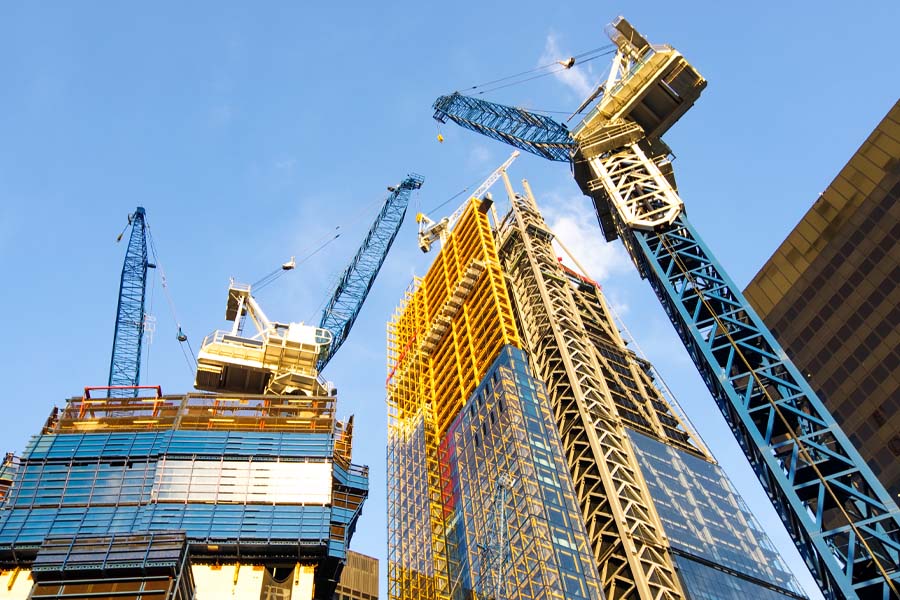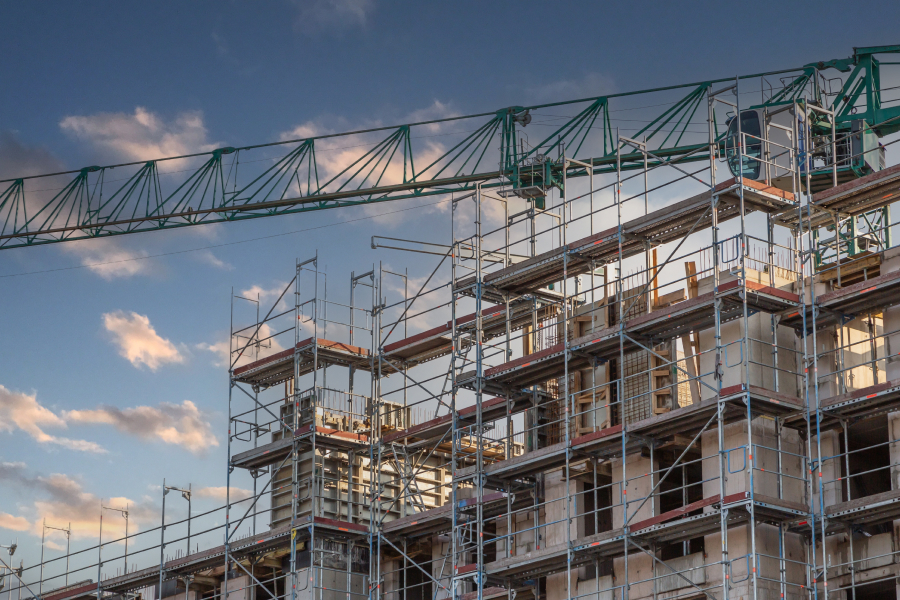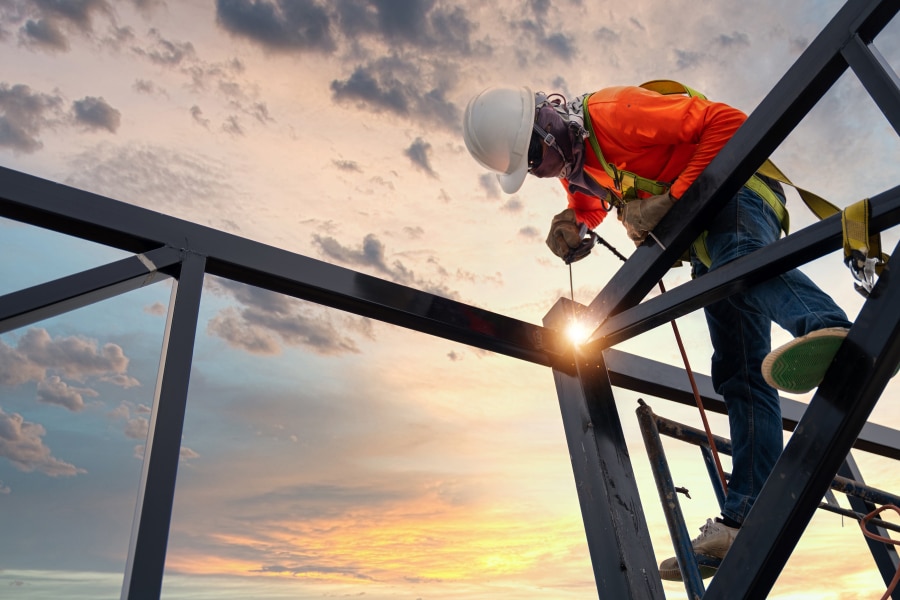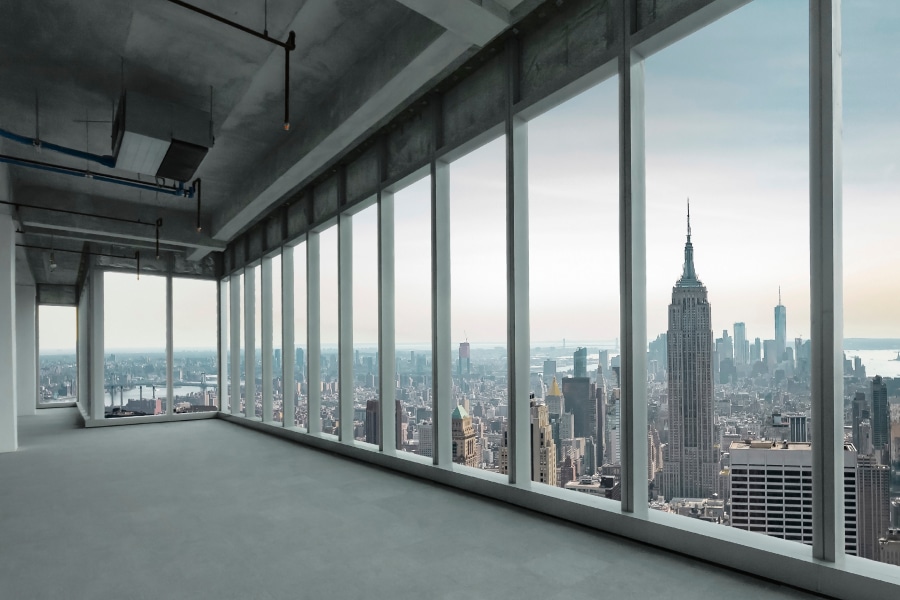Battered by the impact of the COVID-19 pandemic, the UK economy—which shrank more than 9% in 2020—is now facing its latest challenge: a veritable tsunami of rising prices, led by the soaring cost of energy. Food and other household bills are heading the same way; newspaper headlines regularly flag a looming cost of living crisis.
This is all happening at the point when industry—and the government—was hoping a post-COVID recovery was well underway. Such hopes appear to have been dashed, for now.
The last thing businesses, including the construction sector, need is another downturn, especially after the past couple of years. The impact of Russia’s invasion of Ukraine earlier this year on gas prices in particular has thrown economic forecasts into turmoil, and consumer confidence has hit rock bottom.
So is the UK economy—and with that, the construction sector—about to go into recession? Some people think it is.
What is a recession?
Technically, a recession is called when an economy contracts over two consecutive quarters, or six months’ running. We’ve had two consecutive months of reported contraction so far: March and April.
The cost of living is only going to get higher. Inflation is running at 9%, its highest for 40 years, and is expected to rise still further by the autumn, possibly to 11%, according to the Bank of England.
Base interest rates, set by the Bank of England, are creeping up, from 0.1% in December last year to today’s figure of 1.25%, the highest level for 13 years. More hikes are expected as the UK’s central bank seeks to dampen the impact of inflation.
But this will take time, and meanwhile businesses, not to mention consumers, will feel the effects of the new environment we’re in.
The last recession in the UK was two years ago, when COVID first struck. The economy understandably stuttered, given the imposition of various lockdowns. More than 800,000 jobs were lost across the country as businesses closed temporarily or for good.
A much more serious and longer lasting downturn began at the end of 2007, after banks in the UK and overseas failed, prompting a crisis from which the global economy took more than a decade to recover.
Signs of problems
While the current situation may not be as bad as 15 years ago, evidence of weakening demand across UK construction is beginning to show, according to the monthly survey carried out jointly by S&P Global and the Chartered Institute for Purchasing Supply (CIPS). The pair’s latest published poll, in June, reported that total construction activity had expanded at its slowest pace since January, “with housing still the worst-performing category and optimism amongst those being surveyed hitting the lowest point since August 2020.”
Rapid cost inflation persisted in May, S&P/CIPS said, with nearly three quarters of respondents (73%) reporting a rise in purchasing prices, notably fuel, energy and raw material costs.
That said, the overall rate of price inflation eased to a three-month low, and encouragingly, 46% of construction firms polled predicted an increase in business activity during the year ahead, versus 19% expecting a decline.
But other data confirms that a downturn is underway. Construction output fell by 0.4% in April, according to the Office for National Statistics. While some in the industry remain resilient, more turbulence is likely.
According to the Construction Leadership Council (CLC), average inflation for products and materials this year has been around 23%, and there have been even more significant price increases in energy intensive products such as insulation, cement, concrete and many steel products.
The CLC believes further price increases for those products are inevitable in the second half of the year owing to rising energy prices and input costs.
Impact and response
What impact would a recession have on construction? Uncertainty about how long the economy would likely remain in the doldrums would hit business confidence still further—and business hates uncertainty.
Work would be scaled back, with some developers putting on hold those projects that had yet to be started. Jobs would be shed, while in certain areas of the industry recruitment would simply dry up, exacerbating a skills shortage that has many in the industry worried.
A survey conducted by the Construction Industry Council in 2009, hard on the heels of the “Great Recession” of 2008, showed what might happen this time around.
It found that in the professional services arena, nearly half (46%) of such firms stopped recruiting in the 12 months to October that year, while the same percentage of companies made people redundant.
So how to best respond to a downturn that extends beyond a mere blip? Many argue that hanging onto your best employees is vital; you want your business to keep running, so along with all the other necessary considerations there’s little point in getting rid of the very people who make it successful.
Cut costs, not corners
With margins wafer thin even in relatively buoyant times, keeping a vigilant eye on costs will be an imperative during a recession.
So, too, will doing away with non-essential spending and perks that, in normal times, would be perfectly acceptable but seem beyond the pale when jobs are on the line.
Having enough cash to ride out the storm is another plus. And if a pay cut is being considered to help with cashflow, this has to be explained fully to those who will see their wages hit.
In fact, good communications with staff is never more important than during tough times. If things get really bad and painful decisions need to be made, they need to be communicated properly, in good time, and with respect for those who are affected by them.
It’s the least a decently-run business would be expected to do.











